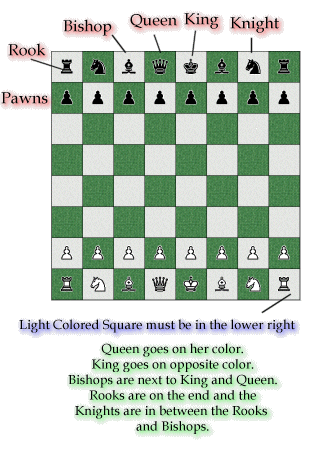What Is The French Defense?. a chess opening for Black. characterized by the moves 1.e4 e6 2.d4 d5.
named after French players who used it in a correspondence match in 1834. a solid and resilient chess opening. played by many strong GMs of the past and presentThe French Defense is one of the most trusted openings in chess, popular at all levels from beginner to strong grandmasters.It has been used in the past by Mikhail Botvinnik, Viktor Korchnoi, Tigran Petrosian, Rafael Vaganian and Wolfgang Uhlmann, among others, but also by many leading grandmasters today. Wesley So, Ding Liren and Alexander Morozevich all regularly rely on the French Defense as one of their major opening weapons.The French Opening is a semi-closed chess opening for Black which occurs after the moves 1.e4 e6 2.d4 d5 (see the position on the right).
The opening got its name in 1834 in honor of several French players who used it in a correspondence match between the cities of London and Paris. Not comfortable playing with the Black pieces? Check out thisIn the French Defense, Black fights for the center from the very outset and creates a very solid e6-d5 pawn chain there.The main problem of this opening is the limited c8 bishop. However, as we’ll see, there are numerous plans that may help Black to activate his light-squared bishop later stage of the game. Why Play The French Defense?There are several reasons to play the French Defense:.
First of all, the French Defense is considered to be one of the most successful openings and has an excellent score in chess databases. That means by playing it, you are automatically maximizing your winning chances statistically. Secondly, playing the French Defense can be a vital alternative for all Black players who are tired of repeatedly entering the highly theoretical terrain of all the absolute main lines such as the sharp Open Sicilians or the Ruy Lopez. Playing the French Defense does not force you to learn an endless amount of theory. It’s much more important to know the key strategic ideas and plans. Moreover, the French Defense is fairly flexible and enables you to become a very versatile player. The French Defense can lead to a variety of pawn structures and you can vary the lines you play and make it tough for your opponents to prepare against you.
Thanks to the asymmetrical pawn structure which arises from most variations, the French Defense is an excellent opening to play when you’re looking for a win.If you’re looking for some classical games to convince you of the French Defense’s potential, you can learn from a world-renowned expert, French GM Fabien Libiszewski. In this exclusive video, taken from his 17-hour chess course “The Bulletproof French Defense”, Fabien teaches grandmaster strategies that will turn your initial cramped position into total domination of the board.French Defense – Typical Chess TacticsActive learning is the key to success in chess. To begin, you have the opportunity to dive actively into the French and attempt to solve 4 puzzles which feature typical tactical motifs that frequently arise from this opening. (You’ll find all the solutions at the end of the article.)French Defense – Pawn StructureWhen you are learning how to play any specific opening, one of the most important things to learn and understand is the resulting pawn structure.

A good understanding of the opening’s pawn structure will then help you to understand the reason behind the piece placements on the board and also help you to appreciate the plans for both sides.The position to the right shows the basic pawn structure of the French Defense that can be seen after the moves 1.e4 e6 2.d4 d5 3.e5.White has a space advantage in the center of the board due to his advanced e5-pawn. However, Black’s pawn structure is solid and without any weaknesses.
Both sides have their own pawn chains, White’s being d4-e5 and Black’s being f7-e6-d5.Because the base of White’s pawn chain (d4) is closer to Black’s side of the board, Black will have an easier time attacking it than White will have attacking Black’s base (f7). Black can actually immediately begin an assault on the base of White’s pawn structure with the move c5.This can be coupled with Nc6, Qb6 and Nf5.

Right Light Center Game Chess Opening Strategy
White will be forced to defend his d4-pawn with the moves c3 (which will then extend White’s pawn chain from b2 to e5), Nf3, Be3, and Qd2 (see the diagram on the left).Eventually, the critical d4-pawn will reach a critical point between being attacked by many pieces, and defended by many pieces! Once Black has weakened the d4-pawn enough and can no longer add pressure to it, he can then switch to attacking the front of the pawn chain (e5) with the move f6.Note how White is forced to constantly defend his pawn center if he wants to keep his space advantage.
If he loses his center pawns, his space advantage will simply disappear and Black will be the one with space to move his pieces around.On the flip side, because of his e5 pawn taking up extra space and his pawn chain pointing towards the kingside, White can start an early attack on Black’s kingside that may distract Black from his attack on White’s center.The French Defense opening revolves around the pawn structure in the center of the board throughout the entire game.Many games have been won and lost depending on the status quo in the center of the board. If White can defend everything well, then he can eventually crush Black with his space advantage. If Black can attack the center effectively and destroy White’s pawn chain, then he can expect to have a great position. Plans In The French DefenseAfter the moves 1.e4 e6 2.d4 d5, White is at a crossroad, as his e-pawn is under attack.
He has 4 main options against the French Defense:. The Exchange Variation which starts with 3.exd5. The Advance Variation that starts with the 3.e4-e5 pawn advance. The Tarrasch Variation: 3.Nd2.
Halasz Gambit
The 3.Nc3 variation, which is the main line.Let’s briefly review each of these options in turn and see how Black should continue. French Defense: Exchange VariationMany White players like to avoid the strategically complex lines that come with a closed center in the French Defense.Therefore, they choose to clear up the situation early in the game by exchanging on d5.
The position becomes a lot simpler and easier to play than the other main lines of the French Defense.The Exchange Variation ( 1.e4 e6 2.d4 d5 3.exd5 exd5 – see the diagram on the right) leads to a symmetrical pawn structure. This decision from White may simplify things, but White can’t now hope for an opening advantage. At the same time, it is also not easy to play for a win with Black.White is a tempo up in a symmetrical structure. The Exchange Variation is often played by those aiming for a quick draw with the White pieces.The good news for Black, however, is that White can’t force a draw in this line.Let’s examine this line a little more in depth:French Defense: Advance VariationThe Advance Variation ( 1.e4 e6 2.d4 d5 3.e5 – see the diagram on the right) is a popular line for White against the French Defense and usually leads to a complex strategic battle.By playing 3.e5, White is trying to gain a space advantage, and he fixes the pawn chain.
He also hopes to limit the potential of Black’s c8-bishop.However, the 3.e5 pawn advance has its weaknesses, too. Now Black should immediately start pressuring the center with 3c5, making defending the d4-pawn the main concern for White.Later, Black will increase the tension with Nc6, Qb6!
An additional problem for White is the pressure on the b2 pawn that makes it hard to develop the c1 bishop. The Advance Variation leads to quite sharp and maneuvering play with decent chances for Black.Let’s take a look at the most important lines. French Defense: Tarrasch VariationThe Tarrasch Variation starts with the moves 1.e4 e6 2.d4 d5 3.Nd2 (see the position on the right).This time, White wants to keep his center pawns on the e4-d4 squares, and simply continues developing his pieces.White has placed his knight on d2 instead of of c3, as he wants to avoid the knight being pinned with Bb4.
White keeps his c-pawn free to move and 3Bb4?! Can be simply answered by 4.c3.However, it is obvious that the d2-knight delays queenside development and this offers some benefits for Black.One of the most logical continuations for Black is to play 3c5, trying to quickly simplify the center.
Black is doing absolutely fine here, however, there is another decent alternative in playing 3Nf6 4.e5 Nfd7 first, and only then attacking the center with c5. The problem with the c8-bishop still remains unsolved, but it is useful to know that Black may sometimes activate it with Bd7-e8-h5 (g6) after f7-f6 is played!French Defense: The Main Line: 3.
Nc3The move 3.Nc3 ( 1.e4 e6 2.d4 d5 3.Nc3 – see the diagram on the right) is the most natural and most frequently played move for White against the French Defense. White develops his knight to a good square and protects the pawn on e4 at the same time.Black has three main options against White’s setup, 3dxe4 (the Rubinstein Variation), 3Bb4 (the Winawer Variation) and 3Nf6 (the Classical Variation).A good choice for Black is to pin the knight with 3 Bb4 and destroy White’s pawn chain after 4.e5 c5 5.a3 Bxc3+ 6.bxc3 Ne7 (see the position on the left).This is the critical pawn structure in the main line Winawer Variation.
White gets the advantage of the bishop pair and some space, but his doubled pawns seriously limit his possibilities in the center and the queenside.This position offers very complex play.